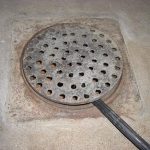When it comes to relaxing and unwinding, there’s nothing quite like a long soak in the bathtub. However, if you forget to turn off the faucet after your bath, things can quickly take a turn for the worse. Before you know it, your bathroom floor is flooded, and you’re left to deal with the aftermath.
If you’re dealing with a bathtub faucet that won’t turn off, it’s important to act quickly to prevent further damage. While tightening the faucet may solve the problem, if it doesn’t, you’ll need to investigate the root cause and take appropriate action. In this article, we’ll explore some common reasons why your bathtub faucet won’t turn off and what you can do to fix it.
What Are the Causes When Bathtub Water Won’t Turn Off?
If you find that the water in your bathtub won’t turn off completely, it could be due to a variety of reasons. Here are two of the most common causes:
A Damaged Faucet Handle
One of the reasons why the water in your bathtub won’t turn off is a damaged faucet handle. If the handle is cracked or the stem is damaged, it won’t have the proper grip to control the water flow, resulting in a continuous flow of water. In this case, replacing the handle is the best solution.
Bathtub faucets come in single or double handles. Double-handed faucets are the standard ones and are easy to replace. However, modern-day bathtub handles may be a bit trickier to remove and replace.
A Damaged or Worn Out Valve
Another common reason why bathtub water won’t turn off is a damaged or worn-out valve. The valve inside the faucet controls the water flow through the stem, and when it wears out, it loses the ability to control the water flow. When the valve is damaged due to long-term usage, it needs to be replaced.
Replacing a damaged valve can be a DIY project, but it may not be possible for everyone. In this case, consulting a professional plumber might be the best option.
Other possible causes of bathtub water not turning off include mineral buildup, debris, corrosion, sediment, and low water pressure. However, a damaged faucet handle or a damaged or worn-out valve are the most common causes of this problem.
What to Do When Bathtub Faucet Won’t Turn Off? – Three Easy Methods
Method One: Tightening The Faucet Handle:
If your bathtub faucet won’t turn off, the handle may be loose. Fortunately, this is an easy fix that works 80% of the time.
- Use a flathead screwdriver to pry off the faucet cover plate.
- Tighten the screw using a screwdriver or adjustable wrench.
- Turn off the water faucet to check if it worked.
However, if tightening the handle doesn’t work, you may need to try another method.
Method Two: Try Fixing The Bathtub Faucet Stem:
If tightening the handle doesn’t work, the stem inside the handle may be damaged. This is a bit more difficult to fix, but it’s still doable.
- Turn off the main water supply to the bathtub faucet.
- Pry off the stem with a wrench.
- Examine the stem for damage or wear.
- Clean the stem with a toothbrush to remove any debris.
- Wrap the valve stem tip with thread-seal tape.
- Press the handle onto the stem and tighten it with a wrench.
- Remount the handle and check if it stops the water.
Keep in mind that this is only a temporary solution and the stem will need to be replaced eventually.
That’s it! These two methods should solve most problems with a bathtub faucet that won’t turn off. If neither of these methods work, you may need to call a professional plumber to troubleshoot the issue.
Method 3: Fix the Bathtub Faucet
If you’ve tried the previous two methods and the bathtub faucet is still dripping, it’s time to fix the faucet itself. Fortunately, you can do this at home without the need for a plumber.
Before you start fixing the faucet, it’s important to protect yourself by wearing gloves and goggles.
Here are the steps to follow:
-
Turn off the main water line to avoid flooding in the bathroom. You can do this by turning off the valve, which should be located in your garage or basement.
-
Take a few photos of the faucet and handle with your smartphone camera. These photos will help you buy the necessary replacement parts quickly and describe the problem better to a plumber, if needed.
-
Pry off the faucet handle using a flathead screwdriver. Then, access the screw underneath the decorative cover of the faucet.
-
Find the packing nut and loosen it with an adjustable wrench. Remove the faucet stem, using the wrench if necessary. If the stem is in good condition, you won’t need to replace it.
-
In most cases, the washer of the faucet is the culprit for continuous dripping. Replace the washer and O-ring of the valve with a new one. Make sure that both the O-ring and washer match the fitting of your faucet to ensure proper function.
-
Reassemble the water faucet, being careful not to damage the stem or handle. When prying off the decorative cap, make sure not to ruin its appearance.
-
Turn on the main water supply and check if you can turn off the bathtub faucet.
If the bathtub faucet still drips after replacing the washer and O-ring, it may be necessary to call a plumber to fix or replace the entire faucet.
Final Words
Dealing with a bathtub faucet that won’t turn off can be frustrating. However, there are simple methods to fix the problem before calling a plumber. First, try tightening the handle. If that doesn’t work, check the stem inside the handle and fix it with thread-seal tape. If those methods fail, consider fixing or replacing the entire faucet system.
By following these steps, you can save money on maintenance and reduce your water bill. Additionally, you can help prevent water waste and promote DIY solutions. However, if you’re unable to stop the water flow, it’s best to call a plumber.




